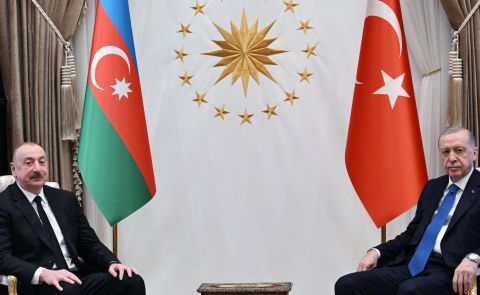
Recent economic data regarding Azerbaijan

Azerbaijan has set aside $44.1 million to meet wheat pricing and export duty shortfalls
Prime Minister (PM) Ali Asadov said the Azerbaijani government has set aside up to $44.1 million in subsidies to compensate the price gap between wheat and flour products as well as grain export tariffs.
Russia, which has been Azerbaijan's main grain exporter since 2021, has hiked grain export taxes, he said.
"Wheat and flour prices have risen as a result of this. The Azerbaijani government has set aside up to $44.1 million in subsidies to offset the gap "Asadov said.
"However, this was before to the conflict. Recent global developments, as well as Russia's export embargo, must be considered. Today, however, it was announced that Russia has lifted the export embargo," he added.
The PM stated that Azerbaijan has sufficient food supplies and that there would be no difficulties with 11-12 major export items.
He stated, "we think that peace will triumph and that this matter will be handled."
Since the beginning of March 2022, Rosselkhoznadzor has reported that Russia has sold 34,090 tonnes of grain harvest to Azerbaijan, Belgium, Germany, Denmark, Kazakhstan, Latvia, Uzbekistan, Georgia, and other countries.
Wheat accounted for more than 2,960 tonnes of total exports, followed by 370 tonnes of barley, 1,780 tonnes of flax, and 600 tonnes of safflower. Granulated sunflower meal accounted for 28,000 tonnes.
Azerbaijan is a major supplier of fruits and vegetables to Russia. Fresh and chilled tomato supply ranked top in the country. Tomatoes placed third on Azerbaijan's non-oil export list last year, with a value of $160.2 million.
Azerbaijan and Russia cooperate in a variety of areas, including the economy, agriculture, customs, communications, high technology, and others. Between the two nations, more than 230 intergovernmental and intercompany papers have been signed, and six "road plans" are being implemented.
Azerbaijan overtakes Russia in Georgian oil gas market
In January 2022, Georgia imported oil gases and other gaseous hydrocarbons (released during the production and refining of oil) from Azerbaijan in the amount of $51.4 million, which is 57.6% more than in the same month of 2021 ($32.6 million).
The same indicator in value terms increased by 8.6% compared to January 2020 ($47.3 million) and by 9.1% compared to December 2021 ($47.1 million).
Thus, Azerbaijan ranked first among the main exporters of oil gases to the neighbouring republic in January 2022. This is followed by Russia ($12.5 million) and the US ($4 million).
Georgia’s total imports of petroleum gases and other gaseous hydrocarbons in January 2022 amounted to $63.9 million, which is 37.7% more than in January 2021 ($46.4 million), and 11.3% more than for the same month of 2020 ($57.4 million).
By the end of 2022, TANAP will have transported 16.2 billion cubic metres of gas
A total of 16.2 billion cubic metres of gas will be delivered over the Trans-Anatolian Pipeline (TANAP) by late 2022.
The statistic represents an increase of 18% over the previous year.
In 2021, 13.7 billion cubic metres of Azerbaijani gas were transferred to Turkey and Europe via the TANAP pipeline.
TANAP is the heart of the Southern Gas Corridor, which runs from Azerbaijan's massive Shah Deniz gas field to Europe through the South Caucasus Pipeline and TAP. The pipeline is strategically significant because it permits Azerbaijani gas to be exported to Europe.
In January-February, Azerbaijan's economy grew by 6.7%
The GDP of Azerbaijan grew by 6.7 percent in the first two months of this year, compared to a 3.2% decline a year before, thanks to growth in the non-oil sector and higher global oil prices.
According to the State Statistics Committee, the oil industry expanded by 0.6% in January-February, while the non-oil sector rose by 10.1%. Gross domestic product (GDP) was $11.3 billion in nominal terms.
Azerbaijan's GDP increased by 5.6% in 2021, compared to a 4.3% decrease the previous year, as the nation relaxed most of the restrictions imposed to combat the coronavirus outbreak. In 2022, the country expects to expand at a rate of 3.9%.
President Ilham Aliyev said the country's external debt had reached $7.4 billion, or 14.9% of GDP, at the start of this year, while foreign currency reserves had surpassed $52 billion, including $45 billion in assets held by the national oil fund.
According to the World Bank, the stabilisation of oil prices, as well as investment and rebuilding spending, could assist Azerbaijan's economic development this year.
The ceasefire deal between Armenia and Azerbaijan in November 2020 reduced geopolitical tensions in the area, although the region's stability concerns remain high.
Nonetheless, analysts' estimates of the recovery's speed differ. While the World Bank expected that Azerbaijan's GDP will rise by 3.1% in 2022, the International Monetary Fund revised its prediction to 2.3%.
Meanwhile, the Asian Development Bank predicted in June of last year that GDP would pick up to 2.5% in 2022 as domestic and international demand increased.
Azerbaijan's economic growth is expected to be 2.7% in 2022, according to S&P
S&P Global Ratings confirmed Azerbaijan's long-term and short-term sovereign credit ratings in foreign and national currencies at 'BB+' in January this year, with the outlook remaining 'Stable.'
"The stable outlook indicates that we expect the ceasefire agreement between Azerbaijan, Armenia, and Russia to remain broadly in place over the next 12 months," the agency said in a report. "Favourable hydrocarbon prices and rising gas exports will support Azerbaijan's fiscal and balance of payments positions."
Nonetheless, oil fields are ageing, and oil output is falling, which new gas exports are unlikely to entirely compensate for. This might have an impact on Azerbaijan's economic, fiscal, and balance of payments performance in the medium to long term. Significant liquid assets held by the sovereign wealth fund SOFAZ help to limit the risks, according to the agency.
Azerbaijan's fiscal and external stock positions, according to S&P, are among the best in the 'BB' category. The government has amassed significant liquid assets, most of which are held in the sovereign wealth fund SOFAZ.
Azerbaijan's banking industry assets are expected to increase in 2021
In 2021, the financial system assets of Azerbaijan increased to $30.9 billion, or 56.6% of GDP, up from 24,4 billion euros (63% of GDP) in 2020.
According to the government, over 73% of assets were held in banks, up from 69.9% a year before.
Last year, banking assets increased by 20%, while liquidity increased by 31.8% year over year to 7.3 billion euros. Liquid assets made up 36.1% of total banking assets, compared to 32.8% in 2020. Banks received capital infusions of 7.9 million euros from their shareholders.
Non-banking credit institutions account for 24.2% of the financial sector's assets. The insurance industry and investment firms each provide 2.5% and 0.2%, respectively.
As the economy recovered from the worldwide shock of the COVID-19 epidemic, Azerbaijan's banking industry continued to improve last year, reporting a profit after more than a year of losses.
According to central bank data, lenders recorded a 7.2% year-on-year increase in overall net profit of 323 million euros in 2021.
The banking sector's operational profit climbed by 17.3% year on year to 501 million euros, total assets expanded by 20% to 20.4 billion euros, and total liabilities jumped by 22.4% to 17.8 billion euros, according to the central bank.
The COVID-19 epidemic wreaked havoc on Azerbaijan's economy, which is traditionally reliant on oil and gas, since decreasing demand for oil and supply issues hurt global oil prices. As the economy shrunk, restrictions to stop the virus from spreading had an impact on domestic consumption and expenditure.
Last year, restrictions were removed, and the economy began to revive, causing the Azerbaijani government to enhance its economic growth prediction for 2021, backed by improving oil prices on global markets and development in the non-oil sector of the ex-Soviet republic.
The GDP of Azerbaijan grew by 5.6% in 2021, compared to a decrease of 4.3% the previous year.
See Also

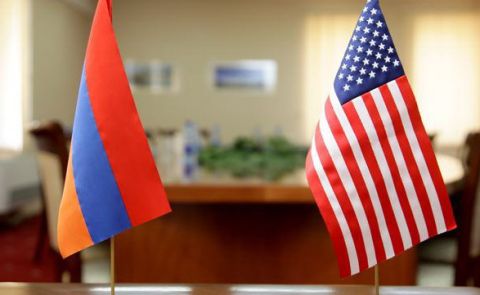
Mirzoyan Meets US Deputy Assistant Secretary Joshua Huck
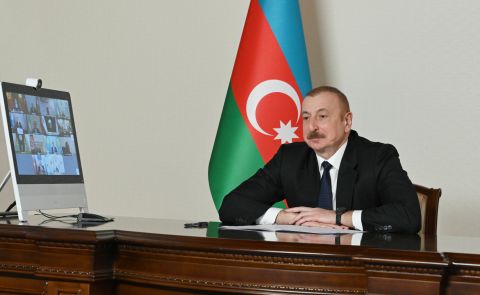
Azerbaijani President Holds Talks with UAE and German Business Delegations on Economic Cooperation
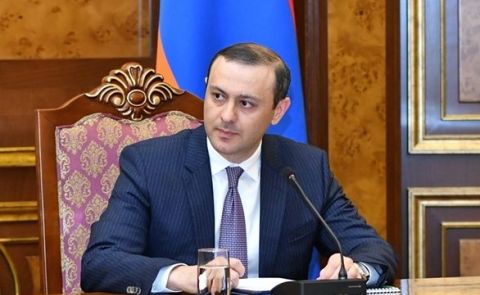
Grigoryan Confirms Armenia’s Readiness to Dissolve OSCE Minsk Group Upon Peace Treaty Signing
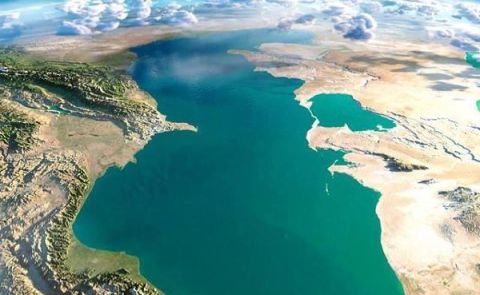
Azerbaijani Official Warns of Ecological Risks to Caspian Sea, Similar to Lake Urmia and Aral Sea
